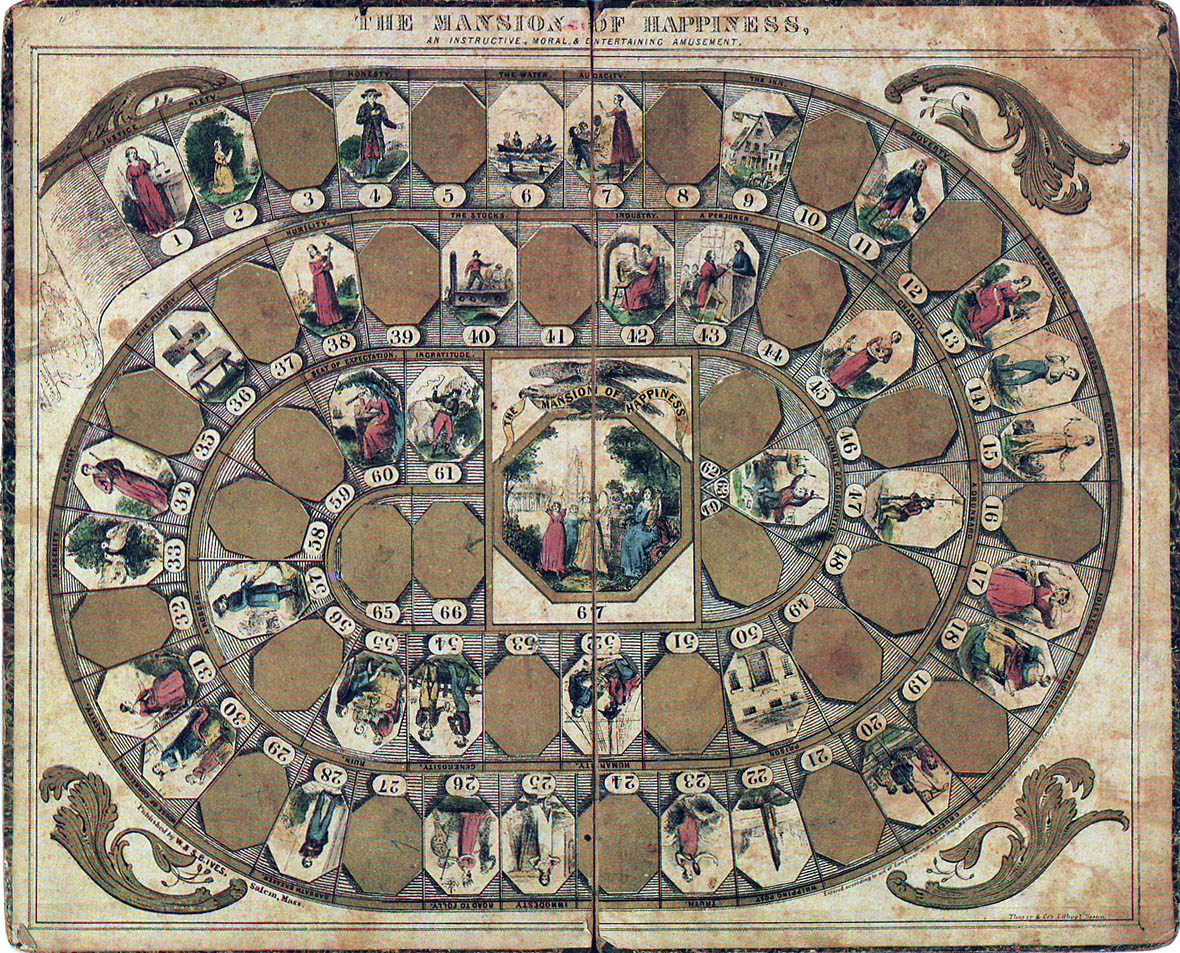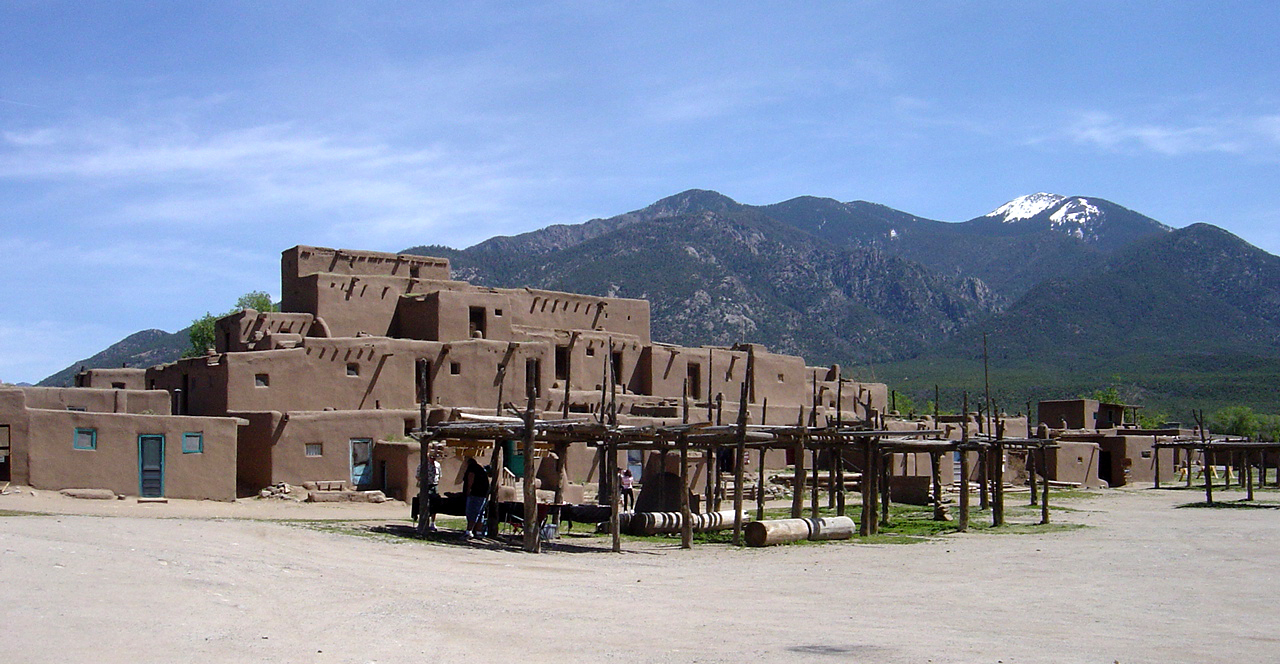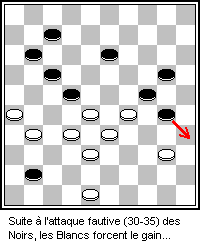|
Indian And Jackrabbits
Indian and jackrabbits is a two-player abstract strategy board game from the Tiwa tribe of Taos, New Mexico. A similar game with a slightly different board is also played by the Tohono O'odham tribe of Arizona. From the outset, these games look like hunt games similar to catch the hare, the fox games of Europe, and the tiger and leopard games of Asia, because they use very similar boards, and the game mechanics (movement abilities and capturing rules) are the same, and the number of pieces each player controls is different. However, they are not the same games, because the goals are completely different. The goal of the one Indian is to capture just one of the twelve jackrabbits. The goal of the jackrabbits is to move themselves safely onto the other side of the board mirroring their initial positions. The game is unrelated to any other despite similarities in board design and mechanics. Indian and jackrabbits may actually be a game isolate. The game was described by Stew ... [...More Info...] [...Related Items...] OR: [Wikipedia] [Google] [Baidu] |
Abstract Strategy
Abstract strategy games admit a number of definitions which distinguish these from strategy games in general, mostly involving no or minimal narrative theme, outcomes determined only by player choice (with no randomness), and perfect information. For example, Go is a pure abstract strategy game since it fulfills all three criteria; chess and related games are nearly so but feature a recognizable theme of ancient warfare; and Stratego is borderline since it is deterministic, loosely based on 19th-century Napoleonic warfare, and features concealed information. Definition Combinatorial games have no randomizers such as dice, no simultaneous movement, nor hidden information. Some games that do have these elements are sometimes classified as abstract strategy games. (Games such as '' Continuo'', Octiles, '' Can't Stop'', and Sequence, could be considered abstract strategy games, despite having a luck or bluffing element.) A smaller category of abstract strategy games manages to i ... [...More Info...] [...Related Items...] OR: [Wikipedia] [Google] [Baidu] |
Board Game
Board games are tabletop games that typically use . These pieces are moved or placed on a pre-marked board (playing surface) and often include elements of table, card, role-playing, and miniatures games as well. Many board games feature a competition between two or more players. To show a few examples: in checkers (British English name 'draughts'), a player wins by capturing all opposing pieces, while Eurogames often end with a calculation of final scores. '' Pandemic'' is a cooperative game where players all win or lose as a team, and peg solitaire is a puzzle for one person. There are many varieties of board games. Their representation of real-life situations can range from having no inherent theme, such as checkers, to having a specific theme and narrative, such as ''Cluedo''. Rules can range from the very simple, such as in snakes and ladders; to deeply complex, as in ''Advanced Squad Leader''. Play components now often include custom figures or shaped counters, and distin ... [...More Info...] [...Related Items...] OR: [Wikipedia] [Google] [Baidu] |
Tiwa Puebloans
The Tiwa or Tigua are a group of related Tanoan Puebloans in New Mexico. They traditionally speak a Tiwa language (although some speakers have switched to Spanish and/or English), and are divided into the two Northern Tiwa groups, in Taos and Picuris, and the Southern Tiwa in Isleta and Sandia, around what is now Albuquerque, and in Ysleta del Sur near El Paso, Texas. Name ''Tiwa'' is the English name for these peoples, which is derived from the Spanish term ''Tigua'' and put into use by Frederick Webb Hodge. The Spanish term has also been used in English writings although the term ''Tiwa'' now is dominant. In Spanish ''Tigua'' only was applied to the Southern Tiwa groups (in Tiguex territory). Spanish variants of ''Tigua'' include ''Cheguas'', ''Chiguas'', ''Téoas'', ''Tiguas'', ''Tigües'', ''Tiguesh'', ''Tigüex'', ''Tiguex'', ''Tigüez'', ''Tihuex'', ''Tioas'', ''Tziquis''. The names ''Atzigues'', ''Atziqui'', ''Tihues'', and ''Tziquis'' were originally applied to the Pir ... [...More Info...] [...Related Items...] OR: [Wikipedia] [Google] [Baidu] |
Taos, New Mexico
Taos is a town in Taos County in the north-central region of New Mexico in the Sangre de Cristo Mountains. Initially founded in 1615, it was intermittently occupied until its formal establishment in 1795 by Nuevo México Governor Fernando Chacón to act as fortified plaza and trading outpost for the neighboring Native American Taos Pueblo (the town's namesake) and Hispano communities, including Ranchos de Taos, Cañon, Taos Canyon, Ranchitos, El Prado, and Arroyo Seco. The town was incorporated in 1934. As of the 2010 census, its population was 5,716. Taos is the county seat of Taos County. The English name ''Taos'' derives from the native Taos language meaning "(place of) red willows". Taos is the principal town of the Taos, NM, Micropolitan Statistical Area, which includes all of Taos County. History Taos Pueblo The Taos Pueblo, which borders the north boundary of the town of Taos, has been occupied for nearly a millennium. It is estimated that the pueblo was built ... [...More Info...] [...Related Items...] OR: [Wikipedia] [Google] [Baidu] |
Arizona
Arizona ( ; nv, Hoozdo Hahoodzo ; ood, Alĭ ṣonak ) is a state in the Southwestern United States. It is the 6th largest and the 14th most populous of the 50 states. Its capital and largest city is Phoenix. Arizona is part of the Four Corners region with Utah to the north, Colorado to the northeast, and New Mexico to the east; its other neighboring states are Nevada to the northwest, California to the west and the Mexican states of Sonora and Baja California to the south and southwest. Arizona is the 48th state and last of the contiguous states to be admitted to the Union, achieving statehood on February 14, 1912. Historically part of the territory of in New Spain, it became part of independent Mexico in 1821. After being defeated in the Mexican–American War, Mexico ceded much of this territory to the United States in 1848. The southernmost portion of the state was acquired in 1853 through the Gadsden Purchase. Southern Arizona is known for its desert cl ... [...More Info...] [...Related Items...] OR: [Wikipedia] [Google] [Baidu] |
Catch The Hare
Catch the Hare is a two-player abstract strategy board game from Europe, and perhaps specifically from Spain. It is a hunt game, and since it uses a standard Alquerque board from the game Alquerque de Doze, it is specifically a tiger hunt game (or tiger game). In some variants, some or all of the diagonal lines are missing which makes it difficult to classify as a tiger game in general. One hare is going up against ten to twelve opponents(hunters or hounds). The hare is the "tiger" in this hunt game which is prey and predator at the same time. The hare can capture the opponents by leaping over them (short leap method). The opponents attempt to surround and trap the hare. The game is the earliest recorded hunt game in Europe, and perhaps even the first hunt game from Europe (other than Bear games and Hare games). The earliest record of the game is in Alfonso X's "Libro de los juegos" or "Book of Games" in 1283. The record shows a game called cercar la liebre, a game played in ... [...More Info...] [...Related Items...] OR: [Wikipedia] [Google] [Baidu] |
Fox Games
Fox games are a category of asymmetric board games for two players, where one player is the fox and tries to eat the geese / sheep, and the opposing player directs the geese/sheep and attempts to trap the fox, or reach a destination on the board. In another variant, ''Fox and Hounds'', the fox merely tries to evade the hounds. There are several versions known: History The game ''Halatafl'' is known from at least as early as the 14th century, and it is mentioned in Grettis saga. It probably originated in Scandinavia, as a variant of Tafl. In fact, Halatafl is still played in Scandinavia with rules similar to Tafl; see below. Edward IV of England is known to have purchased two foxes and 26 hounds to form two sets of ''Marelles'', believed to be Fox and Hounds. As Fox and Geese, the game was a favorite pastime of Queen Victoria. Halatafl ''Halatafl'' means "tail board", in Old Norse, and "tail" presumably refers to a fox's tail. As in Grettis saga, ''rävspelet'' (modern Swed ... [...More Info...] [...Related Items...] OR: [Wikipedia] [Google] [Baidu] |
Stewart Culin
Stewart Culin (July 13, 1858 – April 8, 1929) was an American ethnographer and author interested in games, art and dress. Culin played a major role in the development of ethnography, first concentrating his efforts on studying the Asian-Americans workers in Philadelphia. His first published works were "The Practice of Medicine by the Chinese in America" and "China in America: A study in the social life of the Chinese in the eastern cities of the United States", both dated 1887. He believed that similarity in gaming demonstrated similarity and contact among cultures across the world. Early life Born Robert Stewart Culin, a son of Mina Barrett Daniel Culin and John Culin, in Philadelphia, Culin was schooled at Nazareth Hall. While he had no formal education in anthropology, Culin played a role in the development of the field. His interest began with the Asian-American population of Philadelphia, then composed chiefly of Chinese-American laborers. His first published works were ... [...More Info...] [...Related Items...] OR: [Wikipedia] [Google] [Baidu] |
Alquerque
Alquerque (also known as Qirkat from ar, القرقات) is a strategy board game that is thought to have originated in the Middle East. It is considered to be the parent of draughts (US: checkers) and Fanorona. History The game first appears in literature late in the 10th century when Abu al-Faraj al-Isfahani mentioned Qirkat in his 24-volume work ''Kitab al-Aghani'' ("Book of Songs"). This work, however, made no mention of the rules of the game. In '' Board and Table Games from Many Civilizations'', R. C. Bell writes that "when the Moors invaded Spain they took El-quirkat with them". Rules are included in ''Libro de los juegos'' ("Book of games") commissioned by Alfonso X of Castile in the 13th century. Spanish settlers in New Mexico introduced a four-player variant of Alquerque to the Zuni. Rules 250px, An empty abstract Alquerque board upright=1.75, This board graphic displays Moorish design elements relating to the origin of Alquerque. The algebraic notation faci ... [...More Info...] [...Related Items...] OR: [Wikipedia] [Google] [Baidu] |
Draughts
Checkers (American English), also known as draughts (; British English), is a group of strategy board games for two players which involve diagonal moves of uniform game pieces and mandatory captures by jumping over opponent pieces. Checkers is developed from alquerque. The term "checkers" derives from the checkered board which the game is played on, whereas "draughts" derives from the verb "to draw" or "to move". The most popular forms of checkers in Anglophone countries are American checkers (also called English draughts), which is played on an 8×8 checkerboard; Russian draughts, Turkish draughts both on an 8x8 board, and International draughts, played on a 10×10 board – the latter is widely played in many countries worldwide. There are many other variants played on 8×8 boards. Canadian checkers and Singaporean/Malaysian checkers (also locally known as ''dum'') are played on a 12×12 board. American checkers was weakly solved in 2007 by a team of Canadian computer s ... [...More Info...] [...Related Items...] OR: [Wikipedia] [Google] [Baidu] |
Abstract Strategy Games
Abstract strategy games admit a number of definitions which distinguish these from strategy games in general, mostly involving no or minimal narrative theme, outcomes determined only by player choice (with no randomness), and perfect information. For example, Go is a pure abstract strategy game since it fulfills all three criteria; chess and related games are nearly so but feature a recognizable theme of ancient warfare; and Stratego is borderline since it is deterministic, loosely based on 19th-century Napoleonic warfare, and features concealed information. Definition Combinatorial games have no randomizers such as dice, no simultaneous movement, nor hidden information. Some games that do have these elements are sometimes classified as abstract strategy games. (Games such as '' Continuo'', Octiles, '' Can't Stop'', and Sequence, could be considered abstract strategy games, despite having a luck or bluffing element.) A smaller category of abstract strategy games manages to ... [...More Info...] [...Related Items...] OR: [Wikipedia] [Google] [Baidu] |
_--_2021_--_6741.jpg)



